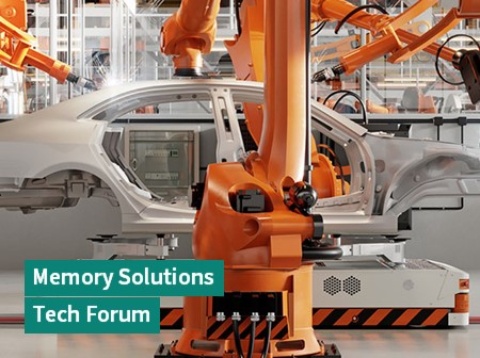Resistive RAM (RRAM) Technology
Energy-efficient non-volatile memories for code storage and data-logging
Perfect blend of efficiency, performance, and reliability
RRAM (Resistive Random Access Memory) offers compelling performance and reliability with excellent power efficiency, making it ideal for firmware management and data-logging in embedded systems. With its unique blend of features and capabilities, RRAM outperforms traditional NOR Flash, EEPROM, and MRAM solutions and enables advanced AI/ML in edge devices.
Embedded systems need long-term reliable memory for boot code. RRAM provides 20 years data retention, along with radiation and magnetism tolerance. Connected devices also use firmware over the air (FOTA) updates to add features and fix bugs.
Data-logging is characterized by high-repetition writes of small amounts of data. RRAM's high endurance and byte-granular writes supports the vast majority of these workloads, demonstrating the versatility of the memory.
Thus RRAM is a game-changing non-volatile memory technology. In addition to power efficiency and reliability, it supports both code and data-logging workloads for modern embedded designs.
The fundamentals of how it works
RRAM operates by changing the resistance of a switching material sandwiched between two electrodes. Applying a bias voltage across the electrodes causes a filament to form, putting the memory cell in a low-resistance state (LRS). Applying a reverse bias ruptures the filament, creating a high-resistance state (HRS). LRS and HRS represent 1 and 0, and the process is repeatable.
Infineon RRAM memory cells utilize a metal oxide switching material, and are designed in a one-transistor one-resistor (1T1R) configuration. The memory is manufacturable using standard CMOS fabrication processes, and is proven scalable below 30 nm. Switching energy is low, switching speed is fast, and endurance is high, making the technology inherently superior to NOR Flash for non-volatile external memory applications.
Driving innovation in medical, consumer, industrial, and beyond
RRAM technology is poised to revolutionize applications across medical, consumer, and industrial markets. The low power consumption and high reliability of RRAM make it an ideal component for battery-powered medical devices such as portable defibrillators, insulin pumps, and portable ECG monitors. RRAM-based devices can enable continuous health monitoring, allowing patients to track their vital signs and receive timely interventions.
In the consumer space, RRAM can power next-generation wearable devices with faster performance, longer battery life, and increased storage capacity. Additionally, RRAM-based IoT devices can enable smart home automation, advanced gaming, and augmented reality experiences. Industrial applications will benefit from RRAM's high reliability and low power consumption, enabling advanced automation, predictive maintenance, and efficient data-logging in industries such as manufacturing, logistics, and energy management.
RRAM will ultimately find its way into vehicles, smart homes, and cities, driving innovation and transformation across a breadth of industries.
RRAM vs traditional non-volatile memories
RRAM offers a paradigm shift in non-volatile memory technology, surpassing the limitations of existing NOR Flash, EEPROM, and MRAM alternatives. RRAM advantages are multifaceted:
A key benefit compared to NOR Flash is driver simplicity. RRAM technology does not require an erase command before rewriting to memory. It also supports byte-granular writes as opposed to NOR's page-level write commands. These two differences greatly simplify driver design. Fewer commands and memory operations also contributes to RRAM technology's inherent power, performance, and endurance advantage.
Compared to EEPROM, RRAM boasts faster write speeds and higher densities, making it suitable for applications requiring frequent data updates, such as data-logging. Compared to MRAM, RRAM operates at much greater power efficiency, offering a balanced combination of performance, power, and cost.
Capitalize on the full potential of RRAM with Infineon
Are you looking to revolutionize your product portfolio with the latest advancements in memory technology? Do you want to stay ahead of the curve and capitalize on the range of opportunities presented by Resistive Random Access Memory (RRAM)? Partnering with Infineon can help you achieve just that. RRAM technology is already proven in several Infineon products, including our latest automotive microcontrollers.
Whether you're looking to develop new products or upgrade existing ones, Infineon can help you achieve your goals. Join the ranks of forward-thinking companies that are harnessing the power of RRAM to drive innovation and growth. Stay ahead of the competition! Contact us today and join the early access program to begin evaluating our RRAM solutions.
Memory Solutions Tech Forum – on demand sessions

Join our Memory Solutions Tech Forum, where industry and Infineon experts highlight new design trends and use cases enabled by Infineon Memory Solutions in automotive and industrial applications.
This forum is specifically designed for the design community, including system architects and design engineers. You gain valuable insights into addressing the challenges of increasing design complexities driven by multiple requirements. Furthermore, the sessions offer solutions to aid in reducing qualification effort, development cost, and time to market.



